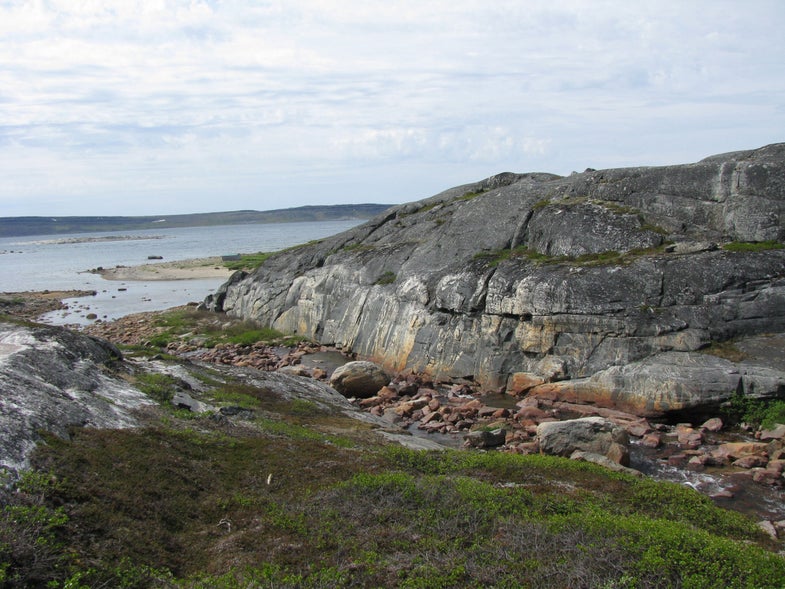The early Earth wasn’t green, but it did recycle itself
Some surprisingly old rocks give scientists a peek into the past

The Earth is about 4.5 billion years old, give or take a few million years. But most of what we see today on our planet’s surface is much younger—only a few billion years old, if that.
So how do we know what happened between the time the Earth was formed, and when our modern rock record starts? We can look into each rock’s family history.
In a paper published last week in Science, researchers figured out a way to peer back in time by looking at some of the oldest rocks in North America.
Jonathan O’Neil examined rocks from a craton—the oldest part of a continent, an area that has stuck around for a few billions of years as the edges of the continent built up around it—in Canada.
“Most of these rocks are 2.7 billion years old, more or less, which is an age that we find in many of these cratons, or cores of continents. But it had the flavor of older stuff in it,” O’Neil says.
That ‘flavor’ was an isotope called neodymium-142, and its presence in the 2.7 billion year old rocks told a fascinating story.
“Neodymium-142 is very useful to peer through the oldest history of the earth, because it only formed during the first 500 million years of Earth’s history,” says O’Neil who has studied the area for years.
By analyzing the tracer, he found that the 2.7 billion year old rocks at the center of the continent came from 4.3 billion year old rocks on the early ocean floor. It’s quite a pedigree. But the find also adds to a question that is currently puzzling geologists: what on Earth was happening in those 1.4 billion years?
Geologists are still trying to understand what the Earth’s geology was like in those early days. Today, plate tectonics shape our planet—continents and oceans slowly cruise around on the globe’s semi-molten mantle, crunching into each other like bumper cars—but that might not be what the early Earth was like at all.
“The Earth is very very good at recycling its own crust and destroying what it created,” O’Neil says. Today, the oldest oceanic crusts can survive for about 200 million years from their birth at a mid-ocean ridge, to their death as they are shoved back underneath a continent. But the oceanic rocks in the new study were able to survive for over 1 billion years, which means something else was going on back then.
“How was it different? How could that big piece of crust have survived for one billion years?” O’Neil says.
It’s not just Canada’s rocks that are posing interesting problems for geologists. A study published earlier this month focused on rocks from a craton in Australia. It also found that it was unlikely that the Earth’s first continental crust emerged by the same processes we see today, and suggested that Earth might have had a single, less fractured outer layer at some point in the past.
O’Neil, for his part, plans to continue looking for traces of the Earth that came before the planet we know and love today. Methods for detecting the tracers he’s looking for have only become available in the past 12 years, which means that there are plenty of other rocks in Canada and elsewhere that are waiting to be analyzed.
“I think now that we see that it was preserved, and that it is still there, and because this says something about the former life of the rocks, I think now a lot of people will want to apply this tracer to other places in the world,” O’Neil says.